Animals employ a wide variety of reproductive strategies.
Some produce an abundance of young, each of which has a relatively low chance of surviving to adulthood, while others produce very few offspring, which each have a very high chance of surviving.
Rodents, rabbits and many insects tend to follow the first reproductive strategy, while elephants, horses and whales usually exhibit the second pattern.
The young produced by animals in the former category are typically expected to fend for themselves.Their parents typically provide very little care for the offspring – it simply doesn’t make much sense for their parents to devote a lot of time or effort into protecting or feeding these young, as most of them are going to die anyway.
But animals in the latter category often expend a lot of resources to help care for their offspring. This makes sense, as the parents have already invested a lot in the production of their young, and it is important that the young survive and reach adulthood.
Accordingly, many of these species are very good parents and show incredible devotion to their young.
They’ll defend their offspring from predators, spend incredible amounts of time feeding their young, and some even construct elaborate shelters or nurseries to give their offspring the greatest chance of survival.
We’ll talk about a few of the best parents below and explain what makes some of them so good at the job.
1. Orangutans
Orangutans take care of their young for many years.
Along with chimpanzees, bonobo chimpanzees, gorillas and humans, orangutans are members of the family Hominidae – better known to most people as the great apes. And while all members of the group invest a lot of time an energy into raising their offspring, orangutans are perhaps the most impressive.
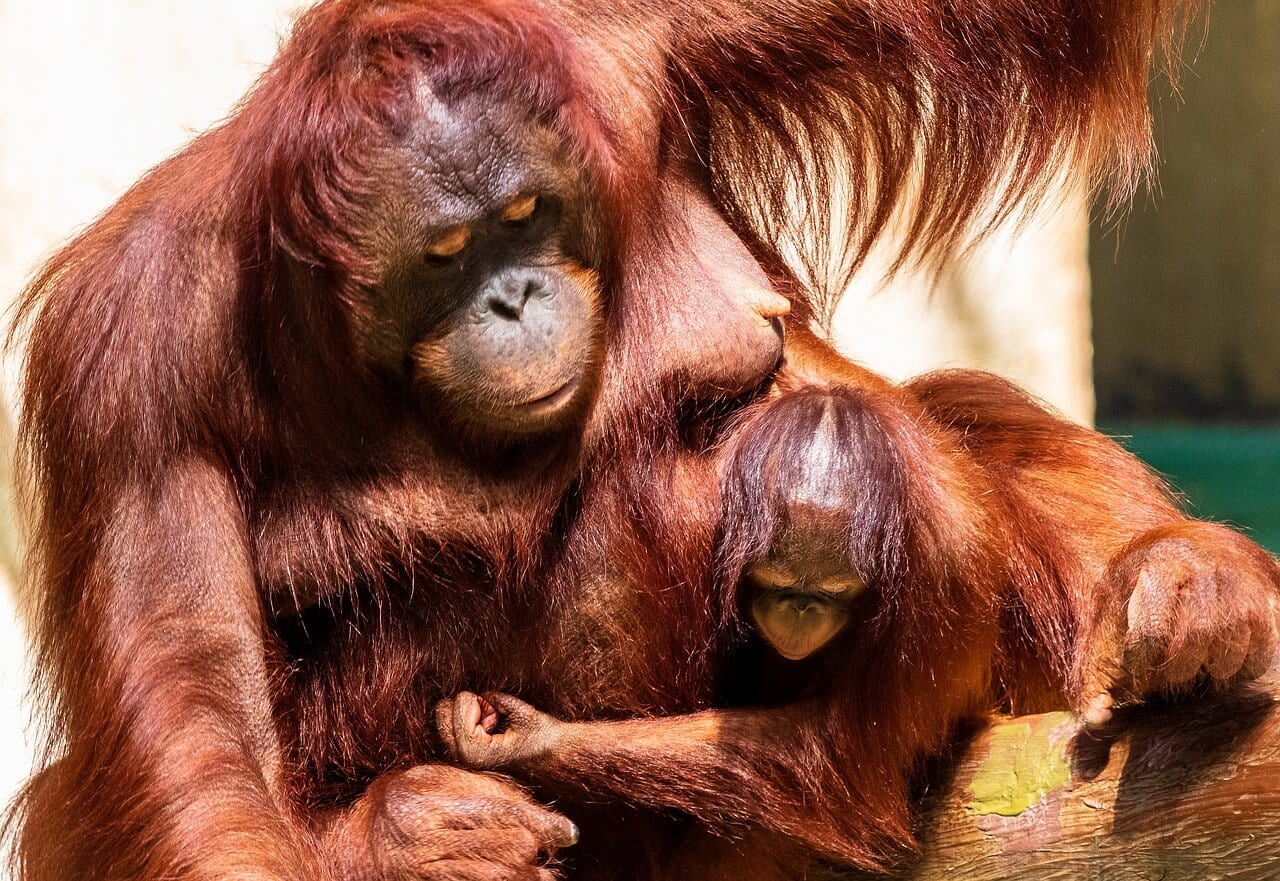
For starters, orangutans have a lengthy gestation period that is nearly as long as that of humans. Most females remain pregnant for about 8 months, before giving birth to a single offspring.
The mother will carry her new offspring almost constantly during the subsequent months to ensure that the youngster does not become separated or wind up being eaten by a predator. She’ll feed, groom and care for her baby for a very long time – some orangutans will care for their offspring (including breastfeeding it) for up to 8 years of age.
And even once the youngster begins climbing on its own, learned to groom itself and figured out how to find its own food, it’ll still stay with its mother until it reaches 10 years of age or more.
Many females even continue to “visit” their mother well into their mid-teens.
2. Hornbills
Hornbills seal themselves inside a nest cavity while incubating their eggs.
Hornbills are a family of birds comprised of about 55 different species. They range from Africa all the way to the Solomon Islands in the south Pacific Ocean, and they typically live in forests, where they subsist on a variety of plants and snakes, lizards, and other small prey. They have unusual-looking beaks, from which they derive their common name.
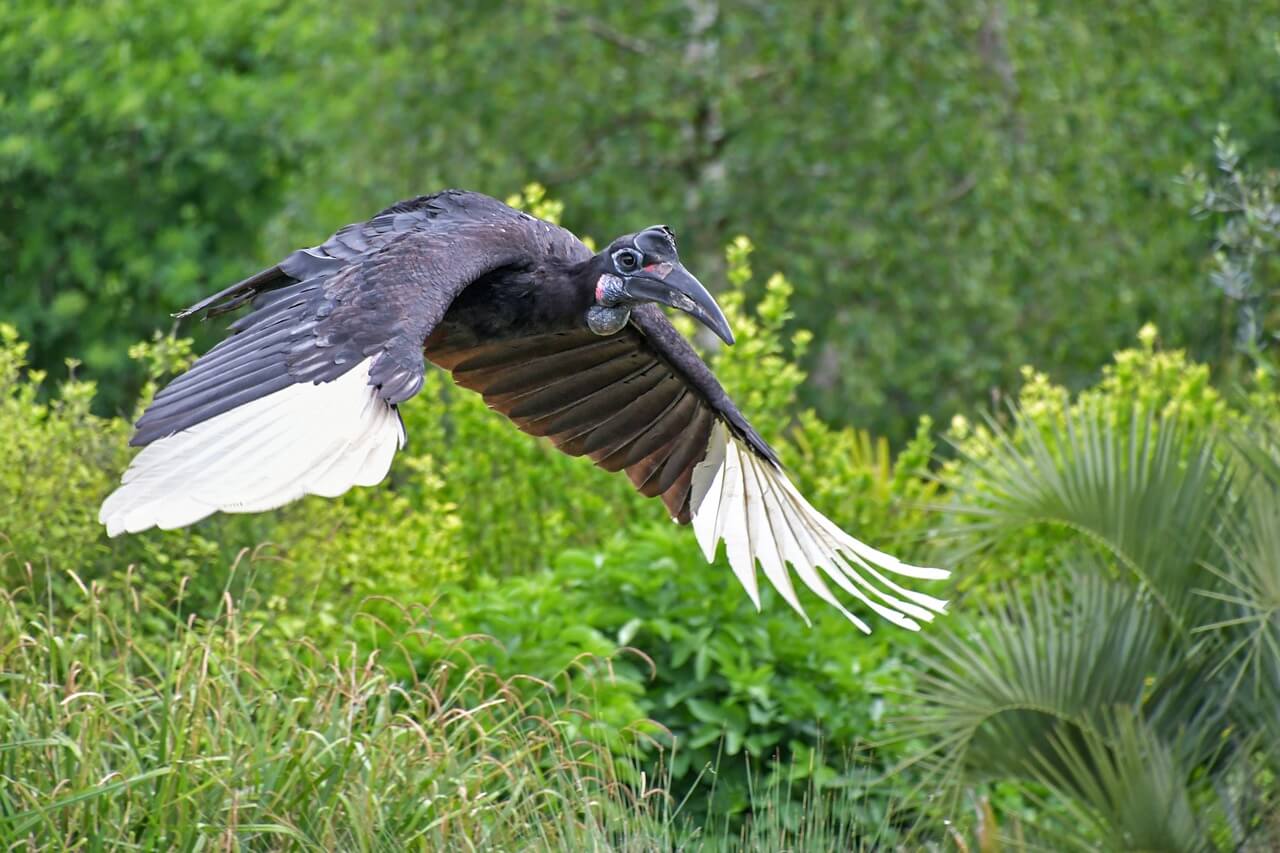
But while there are plenty of interesting things about hornbills, nothing they do is quite as fascinating as the way they reproduce.
Nesting sites are often very difficult for animals to find in these tropical forests, so when animals find a suitable cavity in which they can raise their young, they have to protect it. And because hornbills aren’t especially formidable, they’ve evolved a very effective way to ensure they keep any cavities they find.
In most hornbill species, the male is responsible for locating and preparing the nest. Many will even line the nest with leaves and other soft materials for the mother and the eggs she’s about to produce.
But once the female enters the cavity, the male seals up the entrance with mud and feces. He leaves only a small hole, through which he can pass food. The female will remain inside the cavity, while being completely dependent on the male, for several weeks while the eggs hatch and the youngsters begin growing.
Once the new family begins to outgrow the cavity, the female will break through the sealed entrance and allow the young to fly away.
3. Killdeer
Killdeer will put their own lives at risk to protect their young.
The Killdeer is another interesting bird species, which goes to great lengths to protect their young. But unlike hornbills, who nest in cavities high in the forest canopy, killdeer nest on the ground.

Because they nest on the ground, their eggs are vulnerable to a variety of threats, including snakes, owls, hawks, foxes and feral cats. Accordingly, they’ve developed a number of helpful adaptations to protect their eggs.
For example, killdeer produce spotted eggs, which are often very difficult for predators to see. They may even collect pebbles that are similar in color to the eggs from the surrounding area and scatter them in and around the nest to help camouflage the eggs even further.
But the most impressive thing that killdeer do to protect their eggs and offspring involves putting themselves in harm’s way. If a female killdeer sees a predator approaching, she’ll often flee the nest, and begin hopping around on the ground while pretending as though her wing is broken.
Because a bird with a broken wing is usually an easy meal for a predator, the predator will typically begin chasing the mother, who will lead the threatening animal away from the nest.
Once the female feels like she is far enough away from the nest, she’ll stop pretending her wing is broken and fly away to safety. And while this technique usually works, the occasional female will end up being captured by the predator, while she is trying to protect her young.
4. Giant Pacific Octopus
The very last thing most Giant Pacific octopi females do is incubate and care for their eggs.
The giant Pacific octopus may not look much like a good mom, but she will do more to nurture her offspring than many other species in the animal kingdom.
And one of the unusual things about the Pacific octopus is that she produces a large number of offspring (up to 400,000 eggs in some cases), and then goes to great lengths to protect them. This is unusual as most animals that produce high numbers of offspring don’t do much to protect their young.
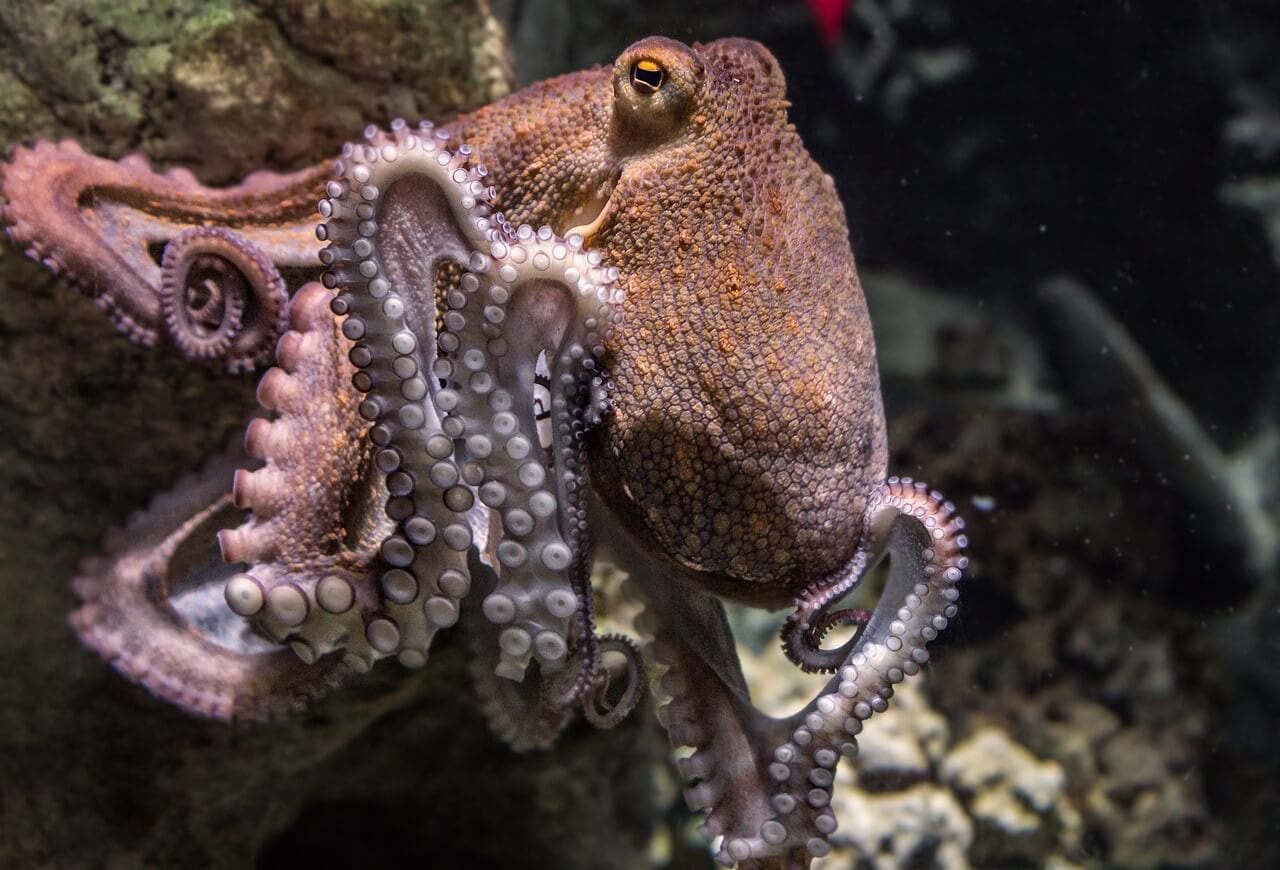
When a Pacific octopus is ready to deposit her eggs, she’ll find a protected nook or cranny in the rocks. She’ll then expel the eggs and then arrange them into a single mass.
Over the next six months, she’ll blow water over the eggs to aerate the egg mass and cradle them in her arms to keep them safe from predators.
The female won’t eat during this time, so she’ll typically grow quite weak as the incubation process proceeds. By the time the eggs hatch, she’ll have reached the end of her lifespan, so she’ll usually begin drifting off, before dying a short time later.
***
Of course, there are plenty of other great parents in the animal kingdom; the ones discussed above are only the tip of the iceberg. Elephant seals, polar bears, manatees and killer whales are all good parents, and our own species – Homo sapiens – provides some of the best parental care in the entire animal kingdom.
What other good parents can you think of? Let us know in the comments below.

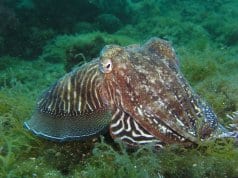

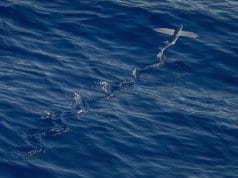










![Red Angus Closeup of a beautiful Red Angus cowPhoto by: U.S. Department of Agriculture [pubic domain]https://creativecommons.org/licenses/by/2.0/](https://animals.net/wp-content/uploads/2020/03/Red-Angus-4-100x75.jpg)

